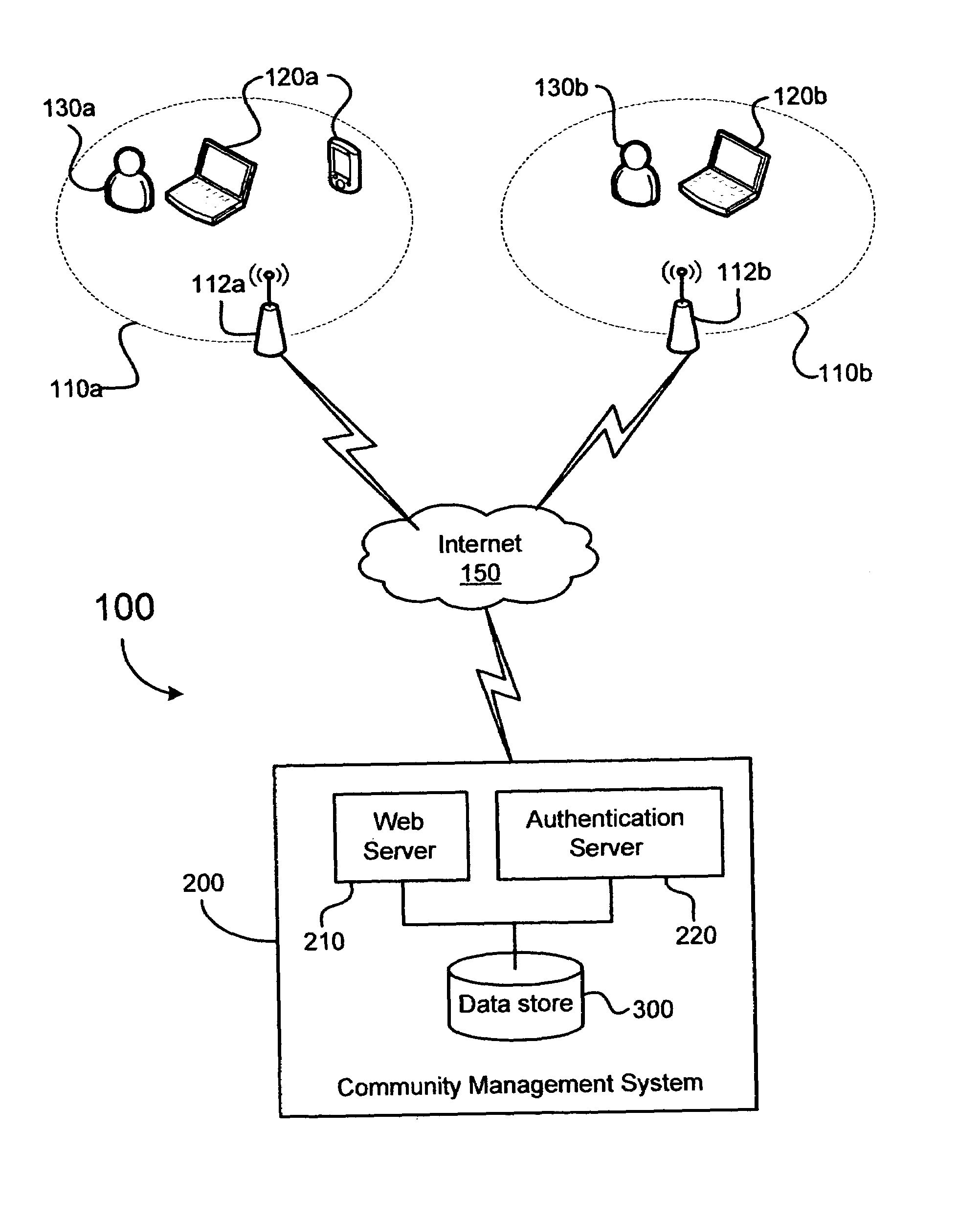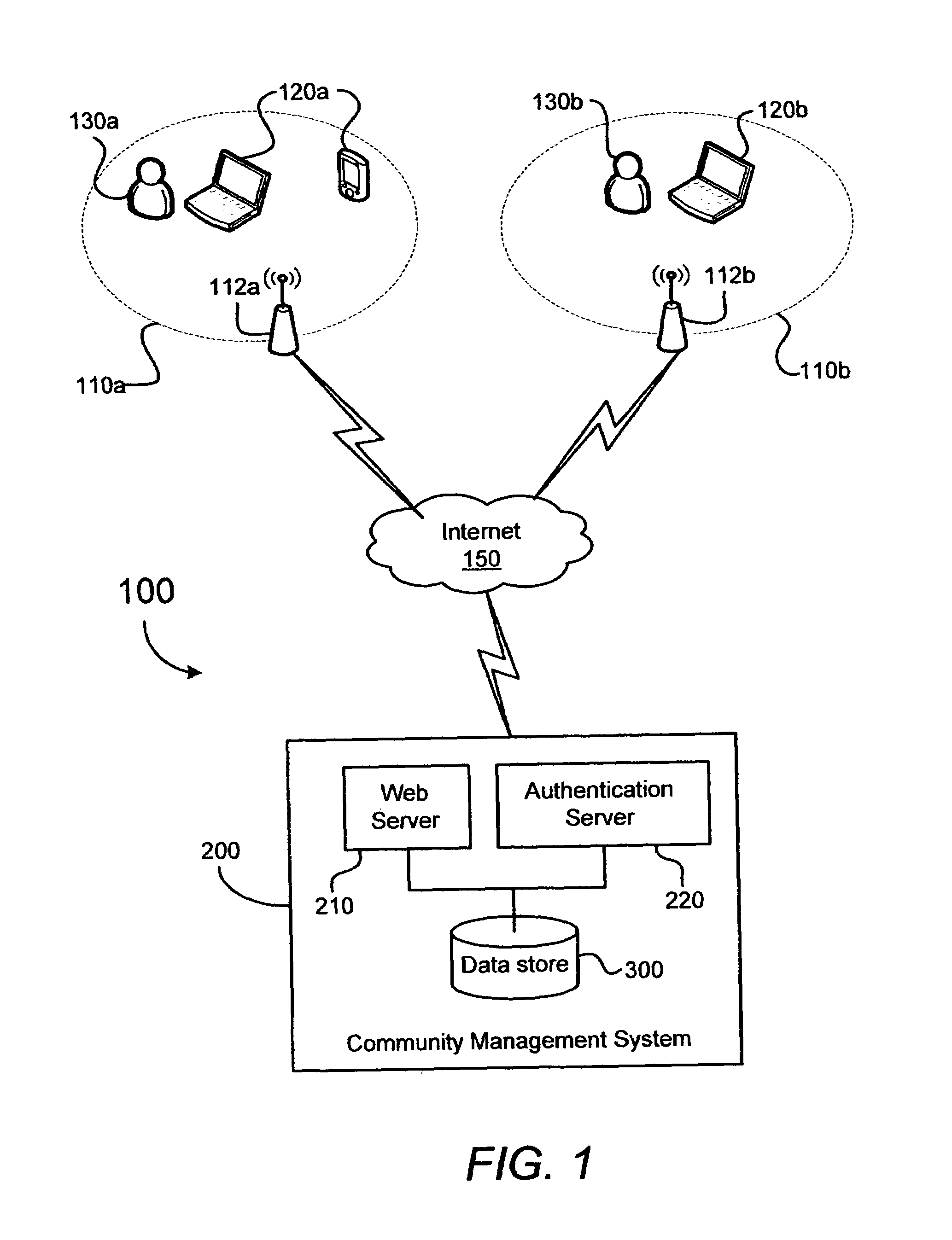System and method for managing a wireless network community
a wireless network and cooperative technology, applied in the field of wireless communication systems, can solve the problems of affecting the difficult for different people to coordinate the complicated task, and cost for a typical home consumer, and achieve the effect of expanding the wireless communication capability and preserving the level of security of the member's wlan
- Summary
- Abstract
- Description
- Claims
- Application Information
AI Technical Summary
Benefits of technology
Problems solved by technology
Method used
Image
Examples
Embodiment Construction
[0025]The present invention relates to wireless communication systems, and more particularly to a system and methods for managing a cooperative wireless network community that includes a plurality of wireless access points owned by a plurality of owners. The following description is presented to enable one of ordinary skill in the art to make and use the invention and is provided in the context of a patent application and its requirements. Various modifications to the preferred embodiments and the generic principles and features described herein will be readily apparent to those skilled in the art. Thus, the present invention is not intended to be limited to the embodiments shown, but is to be accorded the widest scope consistent with the principles and features described herein.
[0026]According to one aspect of the present invention, a central management system manages a community of WLANs. Some or all of the WLANs can be privately owned, while the remainder can be publicly owned or...
PUM
 Login to View More
Login to View More Abstract
Description
Claims
Application Information
 Login to View More
Login to View More - R&D
- Intellectual Property
- Life Sciences
- Materials
- Tech Scout
- Unparalleled Data Quality
- Higher Quality Content
- 60% Fewer Hallucinations
Browse by: Latest US Patents, China's latest patents, Technical Efficacy Thesaurus, Application Domain, Technology Topic, Popular Technical Reports.
© 2025 PatSnap. All rights reserved.Legal|Privacy policy|Modern Slavery Act Transparency Statement|Sitemap|About US| Contact US: help@patsnap.com



